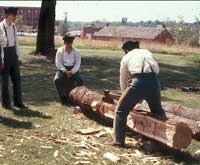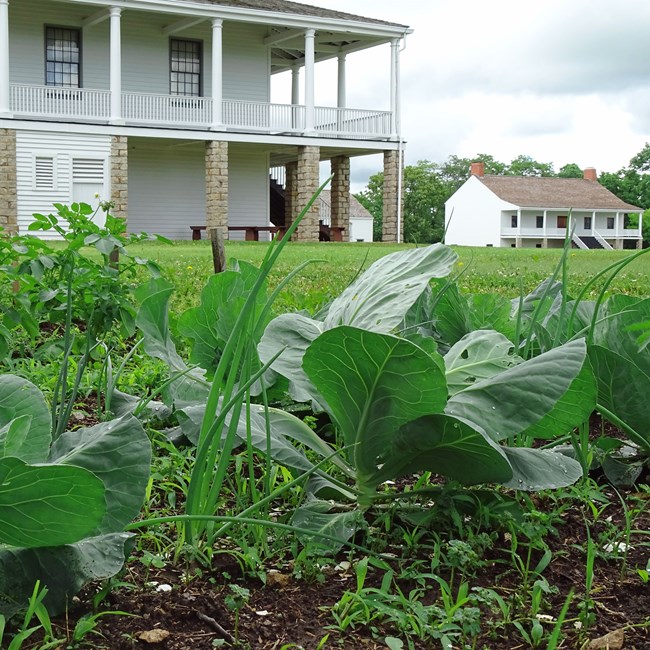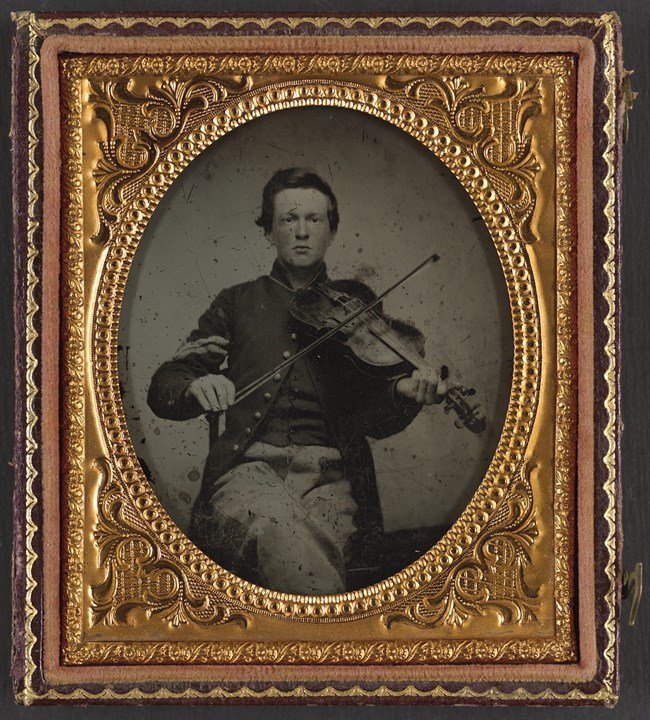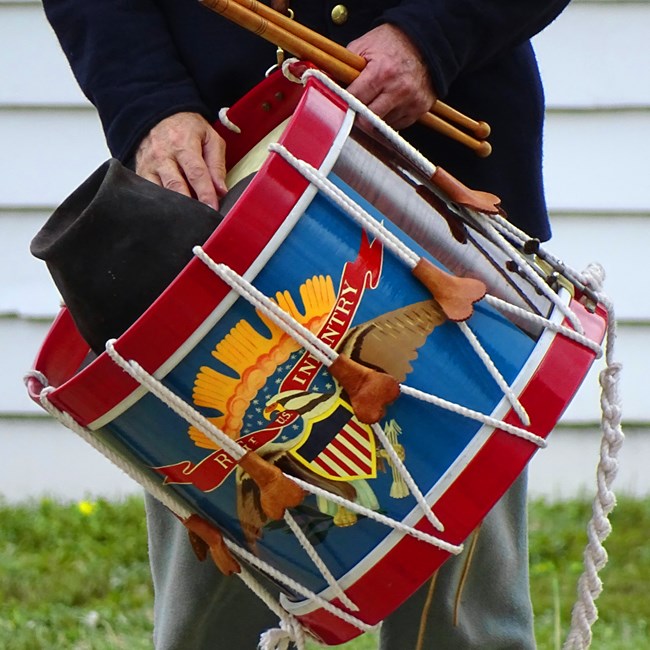
Fatigue Duty: Infantry at Work"We had lived more like pioneers than soldiers." When Augustus Meyers, a soldier in the army in the 1850s, thus summed up the first two years that his company spent on the frontier, he epitomized the most persistent problem of the peacetime army: soldier labor. Fatigues have always been a major cause of discontent among enlisted men, especially when they felt that they were serving more as cheap labor for the army than as soldiers. They realized that many of the fatigue details were essential to the maintenance of a post, and that the isolation of widely scattered small commands necessitated the use of the only available manpower, the soldiers themselves. A certain amount of soldier labor was unquestionably necessary and as long as it did not interfere with training one could argue that it gave useful occupation to while away the hours at desolate stations and provided exercise for the men. At the same time, so much of a soldier's duty was connected with labor of some sort, constructing roads, erecting buildings, that many men deeply resented what they felt was their exploitation as cheap labor. A common complaint was that soldiers knew better how to handle a pick and a shovel than they do a gun. Every soldier, with the exception of the noncommissioned officers and specially assigned men, was liable for fatigue duty as stable police, kitchen detail, room orderly, and a host of other recurring work assignments. Details were announced at company formations, or the men received details from the bulletin board each evening. Short fatigues were welcomed, because the men assigned to them were usually at leisure when their tasks were completed. ConstructionThe fatigue details connected with construction work were arduous and unpopular especially when a new post was being built in some remote region. Men whose previous experience qualified them as carpenters, stonemasons or other "mechanics" were paid extra duty pay. When funding was available, Captain Swords, the post quartermaster in charge of construction at Fort Scott, hired civilians to do some of the specialized work like bricklaying, masonry, and carpentry, but the soldiers performed most of the labor. 
NPS/Wiley Aker GardeningOne of the more common fatigue duties was that of gardening. Vegetables were not included in the rations issued to the soldiers; although, the army realized that for adequate nutrition some vegetables must be included in the diet. Instead of attempting to issue them, the army sought to encourage the raising of vegetables in post gardens. For the most part, the gardens were relatively small operations, although at times the army undertook extensive farming in an attempt to make the forts more self-sufficient. While many recognized the value of post gardens in terms of health and economy, there were some officers who complained that gardening was contradictory to the purposes of the army. Several enlisted men also saw little connection between soldiering and weed-pulling. Other DutiesOther fatigue duties included innumerable police details, which were an important par of each day's routine at all army posts. Necessary cleanup began early in the morning. As stable police, dragoons donned their canvas stable clothes and marched in columns of twos, to water and groom their mounts. Other police details included the cleaning of various buildings and quarters, the disposal of garbage and night soil, and general cleanup around the post. Too much soldier labor, be it tilling the soil, tending to animals, or constructing buildings and roads, obviously detracted from the basic purpose of a regular army, namely, having a group of organized men trained in and hence prepared for showing and using force. 
Library of Congress, Prints & Photographs Division, LC-DIG-ppmsca-34958 Infantry at PlayChores and a smattering of training occupied soldiers but what else was there to do? Like all men, frontier regulars needed to relax and unwind when off duty and the boredom and monotony of army life in the West made the need for healthy recreation all the more acute. Of course there were the amusements that often are associated with soldiers: drinking, gambling and womanizing. But the soldiers found other ways to amuse themselves. Since the army did little to provide recreation, enlisted regulars improvised much of their own amusements. The principal barracks relaxation was visiting and talking among themselves. Some of the entertainments in barracks included reading in quarters, singing and dancing, playing practical jokes on one's fellow soldier, and checkers and card games. A popular card game during the time was a game called "Whist", a card game similar to bridge in which there are four players in two fixed partnerships, with the partners sitting facing each other. 
Wiley Aker/NPS MusicMusic was very much a part of the soldiers' lives. Drums regulated their days and the two musicians, a drummer, and a fifer, assigned to each company were always available for martial airs. Singing was a popular amusement, particularly among the German soldiers, and at some posts the men organized singing societies. Sometimes a fiddler, banjo player, flutist, or bugler might be found in the unit to help liven the long evening. DancingFormal balls were held by the officer corps, but occasionally the entire garrison turned out for a hop. A dragoon sergeant in one fort during the 1850s contended that even the roughest seemed to rise a little higher and to think better of themselves when they attended a formal ball opened to all personnel. Enlisted men also occasionally put on their own dances which sometimes turned into drinking sprees. Probably, few if any women were present at these functions, since attendance by the fairer sex usually insured a higher standard of conduct. Even when ladies were in short supply, the men took things in stride and sometimes had to dance with each other. One officer at a remote pre Civil War post admitted that this was rather dull, but claimed it was better than being a wallflower. TheaterTheater was also a popular amusement. Thespian societies flourished in garrison throughout the thirties, forties and fifties. Productions ranged from skits to drama and from classics to original attempts. One popular play of the time that may have been performed was "Box and Cox" - a one act play produced in London in 1847. ReadingMany of the forts of the time had post libraries for the benefit of those soldiers who knew how to read. Others enjoyed hunting and of Fort Scott it was said that "everyone was hunting mad". Visiting the SutlerThe most popular gathering place, however was the sutler store. The sutler store was a place where a soldier could relax, have a beer, and play a game of pool. Most sutler stores had billiard rooms, checkerboards, etc. Also during the 1840s, soldiers could buy beer and wine from the sutler, but nothing stronger. A soldier may have simply enjoyed browsing through the sutler's wares and purchasing items that he did not receive as part of his standard army ration. The information for this section came from:
Experience more Life on the FrontierBack to Virtual Resource Center Home |
Last updated: December 22, 2022
